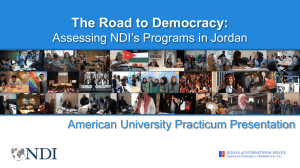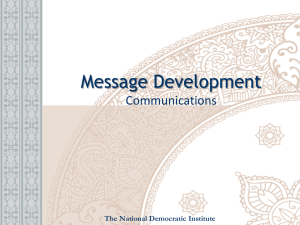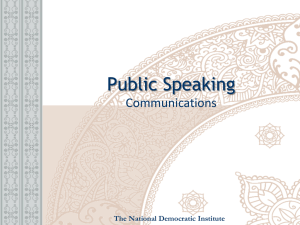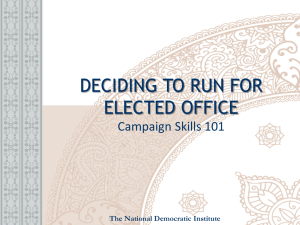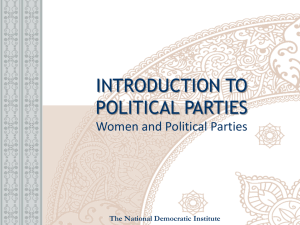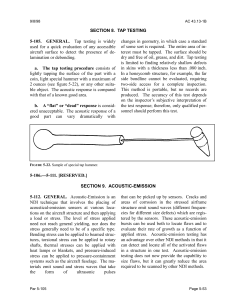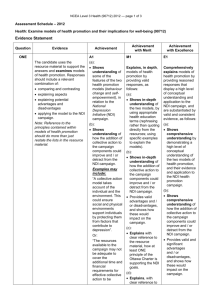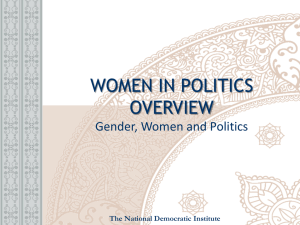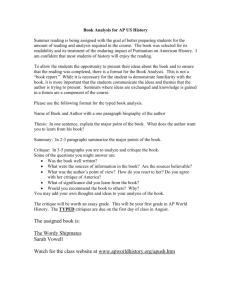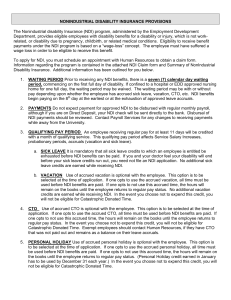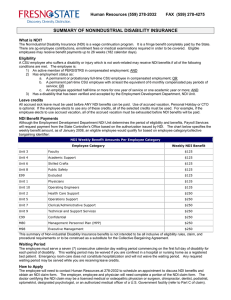Guidelines: Individual Project Critique
advertisement
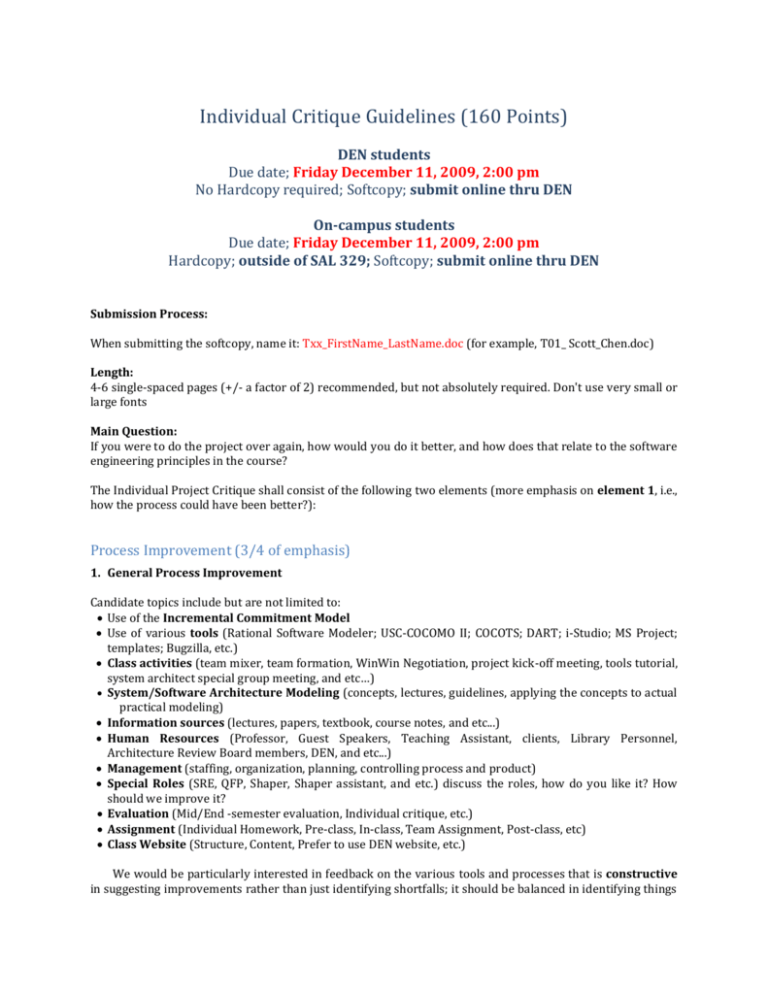
Individual Critique Guidelines (160 Points) DEN students Due date; Friday December 11, 2009, 2:00 pm No Hardcopy required; Softcopy; submit online thru DEN On-campus students Due date; Friday December 11, 2009, 2:00 pm Hardcopy; outside of SAL 329; Softcopy; submit online thru DEN Submission Process: When submitting the softcopy, name it: Txx_FirstName_LastName.doc (for example, T01_ Scott_Chen.doc) Length: 4-6 single-spaced pages (+/- a factor of 2) recommended, but not absolutely required. Don't use very small or large fonts Main Question: If you were to do the project over again, how would you do it better, and how does that relate to the software engineering principles in the course? The Individual Project Critique shall consist of the following two elements (more emphasis on element 1, i.e., how the process could have been better?): Process Improvement (3/4 of emphasis) 1. General Process Improvement Candidate topics include but are not limited to: Use of the Incremental Commitment Model Use of various tools (Rational Software Modeler; USC-COCOMO II; COCOTS; DART; i-Studio; MS Project; templates; Bugzilla, etc.) Class activities (team mixer, team formation, WinWin Negotiation, project kick-off meeting, tools tutorial, system architect special group meeting, and etc…) System/Software Architecture Modeling (concepts, lectures, guidelines, applying the concepts to actual practical modeling) Information sources (lectures, papers, textbook, course notes, and etc...) Human Resources (Professor, Guest Speakers, Teaching Assistant, clients, Library Personnel, Architecture Review Board members, DEN, and etc...) Management (staffing, organization, planning, controlling process and product) Special Roles (SRE, QFP, Shaper, Shaper assistant, and etc.) discuss the roles, how do you like it? How should we improve it? Evaluation (Mid/End -semester evaluation, Individual critique, etc.) Assignment (Individual Homework, Pre-class, In-class, Team Assignment, Post-class, etc) Class Website (Structure, Content, Prefer to use DEN website, etc.) We would be particularly interested in feedback on the various tools and processes that is constructive in suggesting improvements rather than just identifying shortfalls; it should be balanced in identifying things that were helpful as well as obstacles; and it should be relatively high-level in focusing on strategic factors rather than individual bugs (turn in separate bug reports for that). 2. The Incremental Commitment Model Electronic Process Guide (ICM EPG) Content of the guidelines for each case (content in each practice, roles, responsibilities, work products, delivery process, templates ) Use to the following decision criteria to evaluate your current project status o Using the scale of 0 – 4, 0-Not Applicable / Definitely Not 1-Not really / Somewhat 2-Probably / May be 3- Presumably / Likely 4-Definitely / Certainly Decision Criteria Project Status (0-4) Alternatives Your final product has more than 30% of features available in application-based NDI/NCS Your final product has a single NDI/NCS that satisfies a complete solution Your final product has a very unique/ inflexible business process Life Cycle Your project needs high control over upgrade / maintenance Your project needs rapid deployment; Faster time to market Architecture Your final project is critical on compatibility Your final product does not internet connection Your final product needs high level of services / performance Your final product needs high security Your final product requires asynchronous communication Your final product should be able to be accessed from anywhere Resources Your project has critical mass schedule constraints Your project lacks of personnel capability Your project requires little to no upfront costs (hardware and software) Your project requires low total cost of ownership Your project has not-so-powerful local machines The above decision criteria can be used to branch from one process pattern to another (such as Architected Agile pattern to NDI-intensive pattern). o Is/Are there any other decision criteria that could be used to select/ branch a process pattern? o Is there any criteria that should be removed or may not contribute to pattern selection? 3. WikiWinWin Tool What were the strong and weak points of your team winwin negotiation? What were the strong and weak points of the wikiwinwin tool? Describe any improvement suggestions about the wikiwinwin tool, the negotiation process, and training? 4. V&V Process For evaluation process, and artifact review, were the V&V activities help you? If you are a reviewer, were the team responsive to your concerns, how the team interacted with you? Before the last two review packages, reviewers follow the workflow: Create Exit Criteria=>Review and Report=>Create Evaluation Report=>Track Issues, Which activity you think is the most helpful for your project and which is the least, any suggested changes to this process? How do you feel Value-based V&V in the last two review packages? Does Value-based principle really improve IIV&V process? Compared with the previous process, which one do you like? Why? Suggested changes to the V&V process, how could the V&V process be improved to benefit your project and your learning experience, etc. 5. Team Assessment Domain Knowledge Understanding o How well do you understand the client's business/domain? o What process did you use to model the client's business? Staffing (Task assignments, Awareness of roles and responsibilities, Do you have the right people for the jobs? How do you determine whether he/she is right?) Collaborations (Information sharing, Information synchronization) Product Improvement (1/4 of emphasis) Describe possible improvements in the various components of your product: i.e., if you had to design the system again, how would you do it better, knowing what you know now. The Product Improvement section will not be considered in grading the final project, therefore, do not hesitate to discuss some of the potential flaws of the current design: the CSCI 577b teams will consider product improvement suggestions during the rebaselining of the Development Commitment package. The Product and Process improvement aspects of your Individual Critique may include the following: 1. Simplifier and Complicator Analysis: Identify the project category or application sub-domain that fits your project best. Discuss the role of the developer-side and client-side simplifiers and complicators (such as Information Services Division's Policies, Resources and Constraints) in managing client's expectations and avoiding potential problems. (Reference: EP: Requirements Engineering, Expectations Management, and The Two Cultures) 2. Model Clash Analysis: Identify your project's top three (or fewer) model clashes. How did the team's top-level strategy for resolving them compare with the 5-step process presented in class? 3. WinWin-SSRD Mapping: Discuss up to 2 significant challenges your project had in transitioning WinWin agreements into SSRD requirements. (if you are in NDI/NCS team, you can skip this question) 4. Third-party software use: Identify the third party (NDI, NDS, COTS, open source, web services, etc.) software components used in the project and the leading alternatives. Indicate why the specific components were selected over others. Also indicate if given a chance to re-build the system would you use an alternative over the selected component, and why. Example of NDI/NCS: - Application-based NDI: MS Excel, Quickbook, Wordpress - Platform-based NDI: MySQL, PHP, Apache - Web Services: Google Map, Google Checkout, Paypal, Ning.com
